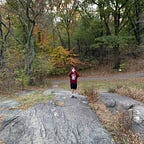Before There Was ‘Parasite,’ There Was ‘High and Low’
This story is part of my weekly “Have you seen …” series where I highlight movies that I think are under-appreciated, misunderstood, or simply worth talking about. New entries are published every Wednesday. NOTICE: Spoilers follow.
Parasite was a movie brimming with surprises, but perhaps the most poignant of them all had nothing to do with the film’s rollercoaster plot. Thinking back now, there’s really nothing more impressive about the movie than how it turns a simple, obvious conceit — rich people up top, poor people down below—into perhaps the single most brilliant examination of class the 21st century screen has yet to see.
Though I’m being a bit reductive here, it’s easy to get lost in the brilliance of Parasite and forget that the driving principle behind its plot has much in common with Downton Abbey. Placing the impoverished characters physically beneath the wealthy seems to oversimplify just about everything, and yet a talented director like Bong Joon-Ho can clearly form a full-length masterpiece out of it. Turns out, he wasn’t the first.
Akira Kurosawa was hot off a string of movies that made the most out of their feudal Japanese settings — Seven Samurai, Throne of Blood, The Hidden Fortress, Yojimbo, and Sanjurō — when he suddenly decided to push things forward a century. His 1963 feature, High and Low, is a noirish exercise centering on a powerful business executive whose career is turned upside down when the son of his chauffeur is kidnapped on the eve of a career-defining business deal.
It’s a testament to Kurosawa’s talents that he could make such a stark generic transition so smoothly, but there’s something bubbling beneath the surface here that connects High and Low back to some of Kurosawa’s previous works. Six years before releasing High and Low, Kurosawa directed an adaptation of Maxim Gorky’s play The Lower Depths, a piece of literature renowned for its harrowing depiction of impoverished life. Joseph Stalin himself served as one of Gorky’s pallbearers, if that tells you anything about Gorky’s lasting reception as progenitor of socialist realism.
Kurosawa was rarely, if ever, an explicitly political filmmaker — or, at least, to frame him as such is to sideline the whole breadth of artistry his films almost universally showcase. Even so, he makes High and Low not just the apex of the police procedural genre but also a brilliant look at just how intertwined the lives of the rich and poor truly are.
Kingo Gondo (played, of course, by Toshiro Mifune) lives in a hilltop mansion overlooking part of Yokohama, the spoils of his years-long career as one of the leaders of a large shoe company. His residence, however, betrays the true size of his amassed wealth: for years, he’s been saving judiciously in the hopes of one day buying a controlling share of the company for which he works. As High and Low begins, that very day arrives.
The kidnapping puts a halt to all of this. It soon becomes clear that the kidnapper meant to grab ahold of Gondo’s child, but the demands are still the same: an exorbitant sum in exchange for the safe delivery of the chauffeur’s son. Gondo concedes, spoiling his attempted takeover and putting his entire professional future at stake.
Unbelievably, this all happens before the film even closes in on the one hour mark. Most of the movie’s remaining runtime centers on the efforts of the police in catching the kidnapper. These moments serve as an opportunity for Kurosawa to showcase his singular mastery of the craft: the twists are few and the scenes long, but every sequence remains gripping regardless. It’s not until the film’s denouement that political Kurosawa starts to emerge.
The kidnapper, it’s revealed, is a local medical student who’s a longtime resident of the slums situated beneath Gondo’s house on a hill. As he suffered days of sweltering heat and nights of shivering cold, he felt as though he simply could not escape the glow of that house, reminding him of a comfort so far out of reach. If you don’t see where I’m going with this, I should point out another common translation of High and Low’s Japanese title: Heaven and Hell.
Perhaps the best justification for the seemingly too-simple design choice of putting rich people atop poor people is that it reflects the seemingly too-simple stratification of society. Is having the housekeeper’s husband live in his employer’s basement in Parasite any more on-the-nose than the richest 1% of American holding nearly 5 times as much wealth as the bottom 50%?
As a conceit, it epitomizes the kernel of all great filmmaking: it makes visual the conceptual. For those without wealth, its mere presence is a burden: being flooded with images of celebrities loafing around their multi-story homes or island hopping in the Balearics during a pandemic is its own kind of cognitive oppression — Kurosawa and Bong simply turned this into visual metaphors capable of communicating this phenomenon in the span of a two-hour film.
If there is a brilliance in the designs of High and Low and Parasite, it is the manner in which each perfectly summarizes the paradox of wealth: in both, the ostensible remove of the wealthy families’ houses is actually what causes them to be targets in the first place. In attempting to draw a stark contrast between themselves and the underclass, the Gondos and the Parks both expose how inextricable their lives really are from those around—and underneath—them.
